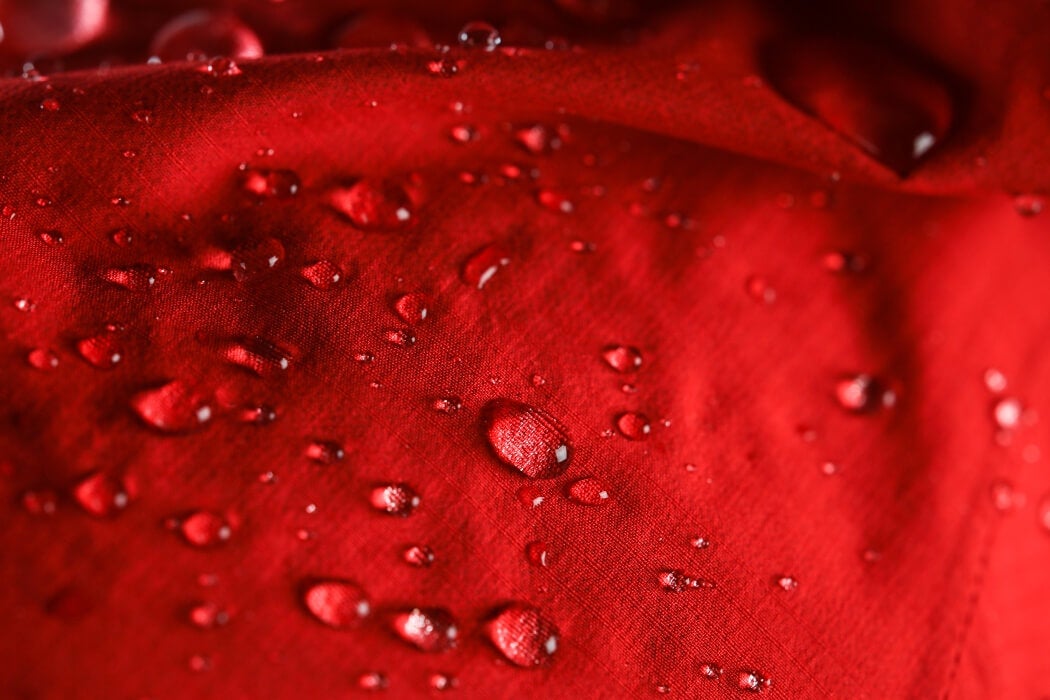
From hydrostatic head to MVTR, here’s everything you need to know about waterproofing and breathability ratings in outdoor clothing.
If you love adventuring in the UK’s mountains, you’ll inevitably encounter some wet’n’wild weather along the way. On some days it’ll just be a light drizzle; on others it’ll be a near-apocalyptic downpour, potentially leaving you wetter than an otter’s pocket.
To stay dry and happy on your adventures, a good set of waterproofs is, therefore, absolutely essential. A waterproof jacket and waterproof overtrousers will protect you against the worst of the elements, as well as deliver good levels of breathability so you don’t over-heat and over-sweat – meaning you’re free to simply focus on the escapism and adrenaline of the mountains.
But picking out the right waterproofs for you can be a tricky process, with lots of confusing ratings and different construction techniques to understand. We’re here to cut through the jargon and help you make the right decision. Here’s everything you need to know about waterproofing and breathability ratings, with definitions, tips and advice from INOV8 ambassador and record-breaking hiker James Forrest.
WATERPROOF RATINGS
What is a “hydrostatic head” rating and what does it mean?
Hydrostatic Head (HH) is a technical way of measuring how waterproof a fabric or item of clothing is, by testing how high a column of water can stand on the fabric before water penetrates it. These scientific measurements are carried out in laboratories, using specialist machinery. The end result is measured in millimetres, and the higher the rating, the more waterproof a fabric is.
A waterproof jacket with a 20,000mm hydrostatic head rating means a 20m high column of water can stand on the fabric without water penetrating it; a jacket with a 10,000mm hydrostatic head rating means a 10m high column of water can stand on the fabric without water penetrating it; and so on.
Generally speaking, 20,000mm or higher is considered a premium, top-tier rating.
Do all waterproof jackets come with a “hydrostatic head” rating?
This varies from brand to brand. Some brands choose to publicly state the hydrostatic head ratings of all of their waterproof clothing; others don’t, sometimes because scientific measurements haven’t been carried out (or sometimes because the ratings achieved aren’t very favourable). This means it can be tricky for consumers to make like-for-like comparisons. INOV8 always publishes its hydrostatic head data.
Shop our range of waterproof running & hiking jackets
What “hydrostatic head” rating should I aim for?
The higher the rating, the more waterproof the fabric will be, but it’s not quite as simple as just choosing the highest rating in your price bracket – although that is, in most cases, a sensible approach.
Jackets with a higher rating will tend to be a little heavier, bulkier and thicker, and therefore better suited to hikers for three-season or four-season use.
For spring and summer outings, or runners moving fast in the mountains, a jacket with a slightly lower HH rating may still keep you adequately dry – and prove comfier, cheaper and lighter overall.
What is the difference between 2-layer, 2.5-layer and 3-layer jackets?
Jackets are usually categorised as 2, 2.5 or 3-layer, depending on how the waterproof layer is attached to other layers.
Generally-speaking, 3-layer jackets are the most durable and protective, but often the heaviest and most expensive; 2-layer jackets tend to be cheaper but less technically proficient with reduced performance levels; and 2.5-layer jackets strike a nice balance between the two, providing a fine compromise between lightness and impressive waterproofing.
Here are the definitions of the three different techniques:
- 3-layer jackets – garments where the waterproof layer (membrane) is sandwiched between a face fabric and inner scrim
- 2.5-layer jackets – garments which combine the main two layers of a waterproof (an external face fabric and a waterproof membrane) with a so-called 0.5-layer (an ultra-thin laminate or coating “liner” that is printed, painted or sprayed on to protect the membrane)
- 2-layer jackets – garments using a simple construction technique combining an exterior face fabric with a bonded waterproof membrane (confusingly, there is often a ‘third’ layer, a hanging mesh liner, but as this is ‘hanging’, rather than bonded, it isn’t counted towards the layers)
What other features affect how waterproof a jacket will be?
The other main features to look out for in a waterproof jacket are the:
- Hood - A good hood should fit snugly and comfortably, but also move easily with the head so you can see where you’re going. Ideally you want a stiffened brim or wired peak to keep rain off your face.
- Pockets and zippers - These points of weakness are liable to water ingress. Choose sealed pockets, rather than mesh-lined ones, for improved waterproofing, and ensure the central zipper is water-resistant with an internal or external storm flap.
- Wrist cuffs - Adjustable wrist cuffs – sealed with Velcro or sometimes toggles or clips – are similarly important because they enable a tight, fine-tuned fit around the wrist, preventing rain ingress.
- Taped seams - stitched seams leave tiny holes in your waterproof, which water can get through. Applying seam tape on the inside of the garment creates a waterproof seal. Taped seams are usually a requirement for any waterproof carried in a fell, trail or ultra race.
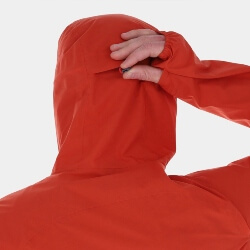

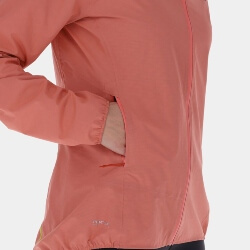

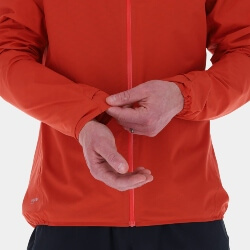

BREATHABILITY RATINGS
Waterproof clothing can often feel clammy and sweat-inducing, so breathable fabrics are designed to keep rain out but simultaneously allow sweat to escape. Breathability is commonly measured in two ways:
- An MVTR (moisture vapour transmission rate) is measured in g/m²/24hr, with a higher figure indicating better breathability (20,000g/m²/24hr is considered a premium score).
- A RET (resistance to evaporative heat transfer) score is measured from 0-20+, with (confusingly) a lower figure indicating better breathability (a RET value of 0-6 is considered excellent, 7-13 is good, 14-20 is ok, and 20+ is poor).
WHICH INOV8 JACKET SHOULD I CHOOSE?
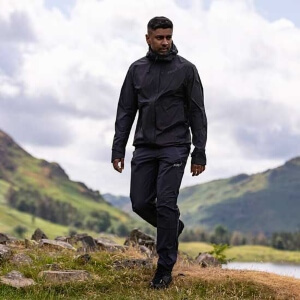

1. INOV8 TRAILSHELL – the one for 3-season hiking
- Construction technique: 2.5-layers
- Hydrostatic head rating: 20,000mm
- Breathability rating: 20,000g/m²/24hr
Constructed using a Pertex Revolve 100% recycled polyester main fabric, this mid-weight waterproof jacket has an impressive 20,000mm hydrostatic head rating, and has been designed for hikers venturing out into inclement weather. 295g, men’s medium.
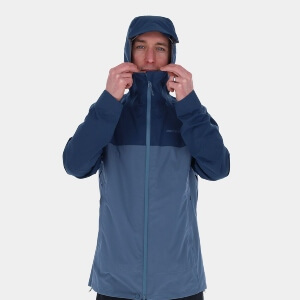

2. INOV8 VENTURELITE – the one for maximum breathability
- Construction technique: 3-layers
- Hydrostatic head rating: 15,000mm
- Breathability rating: 40,000g/m²/24hr
Billed as a “premium hiking jacket that provides complete protection from the rain and wind, while also being lightweight and breathable”, the VENTURELITE FZ delivers impressive stats. You get a 15,000mm hydrostatic head rating, a whopping 40,000g/m²/24hr (one of the highest across the whole industry) and a 3-layer design.
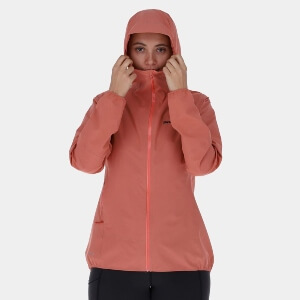

3. INOV8 STORMSHELL V2 – the one for mountain running and fast hiking
- Construction technique: 2.5-layers
- Hydrostatic head rating: 20,000mm
- Breathability rating: 20,000g/m²/24hr
Made from a Pertex Shield 2.5-layer waterproof fabric, the STORMSHELL is billed as a “high performance waterproof running jacket built for intense training and racing” – but it works just as well for fast hiking too. It is ultralight (just 149g, men’s medium) and super-comfortable.
HOW TO LOOK AFTER YOUR WATERPROOF
The performance of a jacket diminishes over time. This decline is partly due to the accumulation of dirt, sweat, food, sunscreen, skin oils and various other foreign particles, which can infiltrate the fabric of a waterproof-breathable membrane. This contamination increases the likelihood of water penetration and reduces the membrane's ability to effectively transfer sweat moisture.
Additionally, the DWR (durable water repellent) coating applied to the fabric to enhance its water-shedding capabilities will degrade over time. As a result, rain will no longer bead up on the surface, causing the jacket to absorb water and become saturated more quickly.
But the good news is there’s a straightforward solution: see our blog post on How To Re-proof Waterproofs.



















